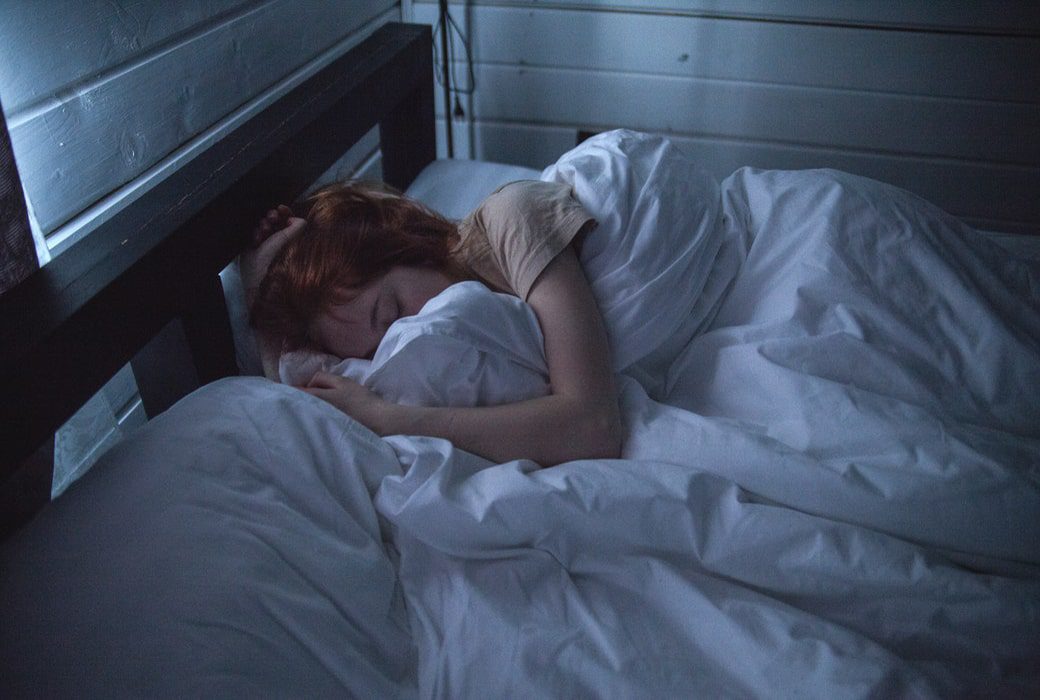Upper back pain, although not as common as lower back pain, can easily keep you up at night. Whether you’re having trouble falling asleep or staying asleep, there are some things you can do to sleep comfortably with upper back pain.
The most common causes of upper back pain include using the wrong type of pillow or mattress, poor posture throughout the day, or a less-than-ideal sleeping position. Upper back pain can also be caused by osteoarthritis, herniated disc, or injury. No matter the cause, we’ve got tips to help you sleep.
1. Sleep on Your Back or on Your Side With a Pillow.
Whenever we’re talking about back pain, the first thing to look at is the sleeping position. While we definitely need sleep, the fact is that we can cause some pain in the back by sleeping in a suboptimal position.
Sleep on Your Back
The best sleeping position for back pain is— strangely enough— on your back. This may seem counterintuitive, but sleeping on your side or stomach puts more pressure on your spine, not less. So, even if sleeping on your stomach helps your back pain, it’s likely to cause more problems in the future.
You may try sleeping on your back with a pillow under your knees. This helps keep your spine in a neutral position.
Sleep on Your Side With a Pillow
If you just can’t sleep on your back, side-sleeping is the next best thing. But, in order to protect your spine, sleep with a pillow between your legs. This keeps your hips in line and prevents your spine from gradually moving out of alignment.
If you have pain between the shoulder blades, try sleeping with a small pillow or a rolled-up hand towel between the shoulders for support.
2. Choose the Right Pillow and Mattress to Avoid Upper Back Pain.
The thickness of your pillow and the firmness of your mattress may also contribute to your upper back pain. Most people with upper back pain have pillows that are too thick. You want a pillow that keeps your neck in a neutral position as you sleep.
- Stand up straight with your shoulders back and your spine straight, have someone take a picture of you from the side-on.
- Next, lay down in your bed like you’re going to sleep and have them take a side-on picture again.
- Compare the two pictures. If your sleeping position is far from your standing position, it may be causing the issue.
Back sleepers need thinner pillows that allow their necks to stay straight. Side sleepers need thicker pillows to do the same— so their heads aren’t canted up or down at an angle.
Your mattress may be causing your back pain, too. Again, the idea is to keep your spine neutral while you sleep.
- Take a yardstick (or something equivalent) and lay it on your bed.
- If there are dips or humps in the mattress, it may be time to upgrade and get a better one.
The best mattress for back pain varies. Back sleepers generally need a firmer mattress. Side sleepers usually need one that’s slightly less firm, so it can absorb their hips and shoulders while simultaneously providing support to the rest of the body.
3. Practice Proper Posture.
Perhaps you’ve spotted the pattern so far on this list. It’s all about keeping a neutral spine, both awake and asleep. Whether you’re sitting at a desk, walking around the park, or driving, practicing proper posture will save your spine.
Here are some factors to keep in mind for keeping your posture pretty:
- Keep your shoulders back, your chest wide, and your ears in-line with your shoulders.
- Keep your chin tucked down and back so it is level with the floor.
- Invest in an ergonomic chair that helps you maintain the natural S-curve of your back.
- Set a timer for every 15-20 minutes to check your posture. Pretty soon you won’t need the timer. And soon after that, you won’t need to check, you’ll just fix your posture automatically!

4. Stretch Before Bed.
Since one of the most common causes of upper back pain is strained or tight muscles, stretching can work wonders. Here are a few quick ones you can do before bed:
- Cat and cow – Yoga stretch.
- Cobra – Yoga stretch.
- Doorway stretch.
- Butterfly stretch.
5. Strengthen the Back With Upper Back Exercises.
Along with stretching, strengthening the upper back can also help for long-term pain relief and comfortable sleeping. You can do something as simple as push-ups or face pulls to work the upper back. Even 10 minutes a day added to your regular exercise routine can help tremendously.
Speaking of which, if you’re not getting the minimum of 30 minutes of exercise a day, 5 days a week, you’ll notice a world of difference when you do. Exercise is good for so many things, including upper back pain.
Of course, if your pain is too severe to perform everyday activities or mild exercise, you should see a doctor.
6. Try Massage.
A professional massage is a great way to reduce pain and sleep comfortably. In fact, if you see a physical therapist or chiropractor, they’ll often suggest a massage. There’s a reason for this. Several, in fact:
- Promotes healing and new blood flow to the area.
- Reduces pain and eases muscle tension.
- Improves well-being and promotes relaxation.
- Loosens tight muscles that may be contributing to poor posture.
If you have issues with upper back pain, consider making an appointment with our highly recommended massage therapists at Better Health Anchorage.
7. Try Chiropractic Care.
Now that we’ve mentioned chiropractic care, let’s talk about it in a little more depth. Chiropractors treat back pain, pinched nerves, spinal misalignments, muscle strains and sprains, joint issues, and pretty much anything that has to do with the back.
They use many different methods to relieve pain and help their patients sleep, function, and work toward optimal health. The most common treatment for upper back pain is usually a combination of chiropractic massage, spinal adjustment, stretches, and posture alignments.
Many people don’t know what exactly to expect from a spinal alignment. However, chiropractic care has been shown to be safe, relaxing, and effective for all kinds of musculoskeletal problems.
8. Apply Heat or Ice Pad Before Bed.
Finally, you may want to utilize ice or heat immediately before bed. Just make sure you don’t fall asleep with an ice pack or a heat pack on your back!
Ice can help relieve pain and reduce swelling. Heat can help soothe the area, loosen the muscles, and promote healing. Experiment with one or the other before bed, but avoid doing them both back to back, as you could cause damage to your skin.
Now, a few bonus tips for specific issues.
Upper Back Pain After Sleeping a Few Hours
Pain in the upper back after sleeping a few hours is usually caused by poor posture during the day. Since this is usually a muscle issue, pay close attention to tips 4, 5, 6, and 7 above. And make sure that your pillow is allowing your upper spine to stay in line!
Back Pain Between Shoulder Blades After Sleeping
Once again, this is often due to things we do during the day, like hunch at a computer or slouch while watching TV. One thing you can do to help this is stretch first thing in the morning.
When you wake up, stretch your arms over your head and gently wake up the muscles of your back. It’s also a good idea to incorporate stretching or yoga during the day.
If it still persists, try placing a small pillow or folded hand towel between your shoulder blades while you sleep.
Resources:
https://www.sciencedirect.com/science/article/abs/pii/S0003687010000724
https://journals.lww.com/spinejournal/Abstract/2007/10010/Safety_of_Chiropractic_Manipulation_of_the.16.aspx









